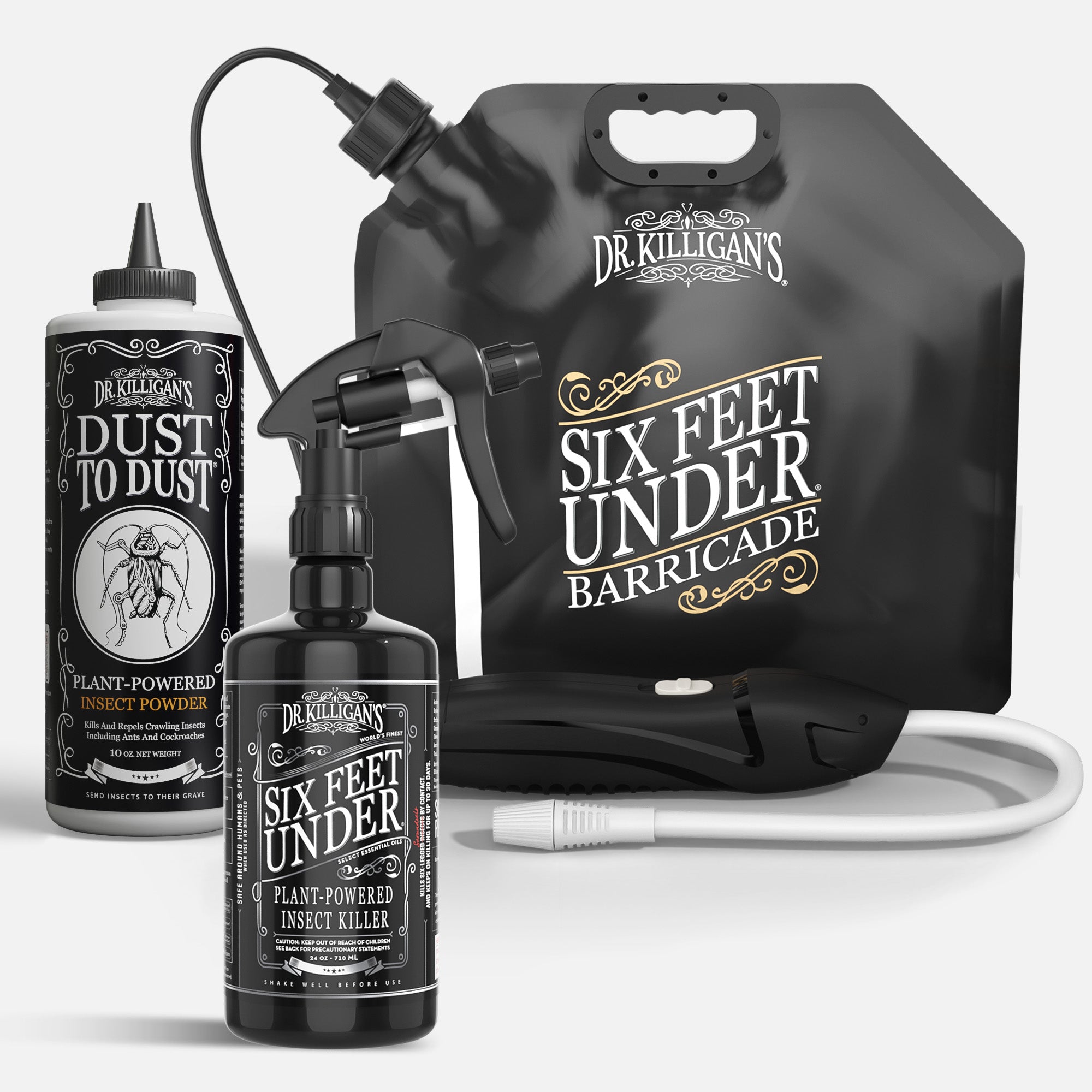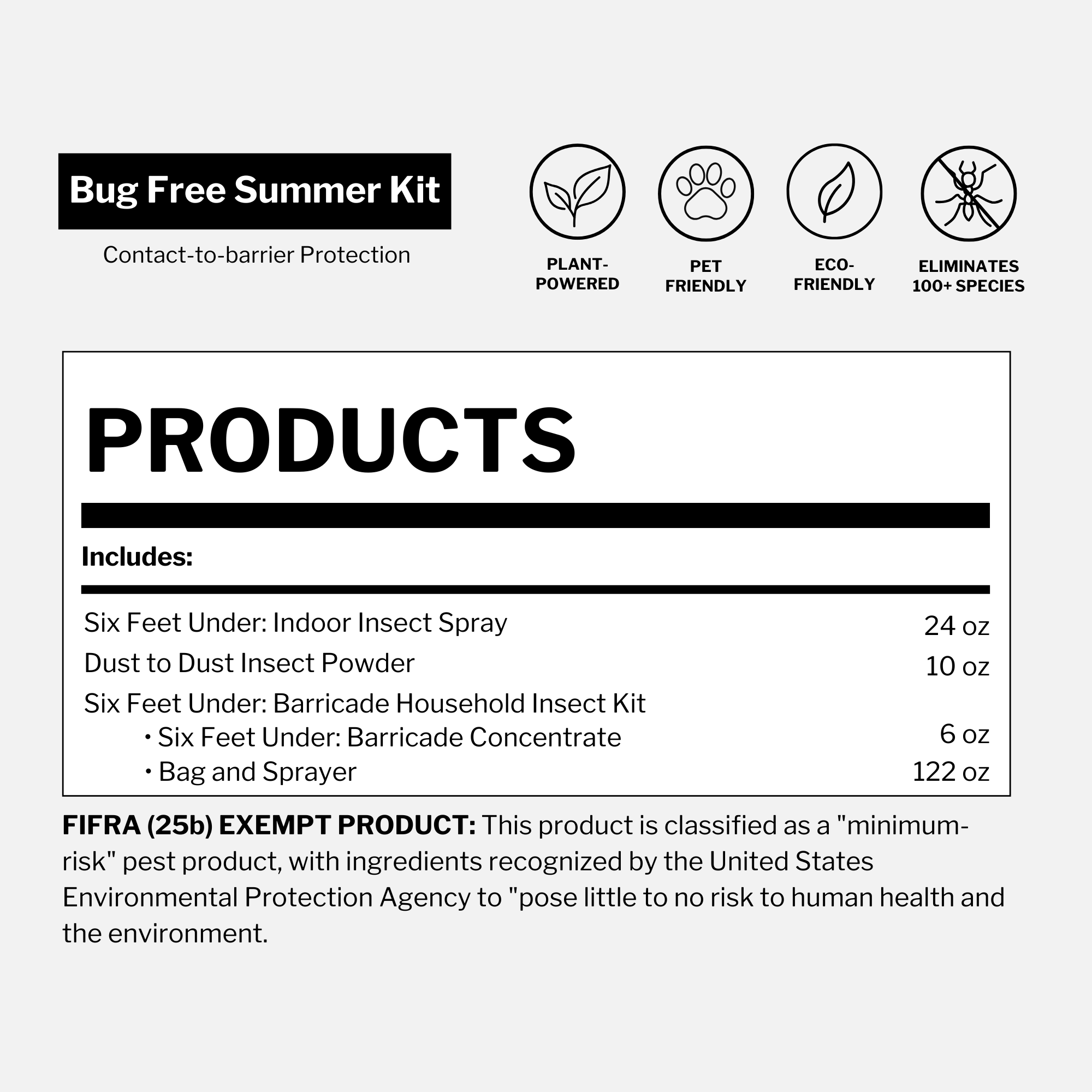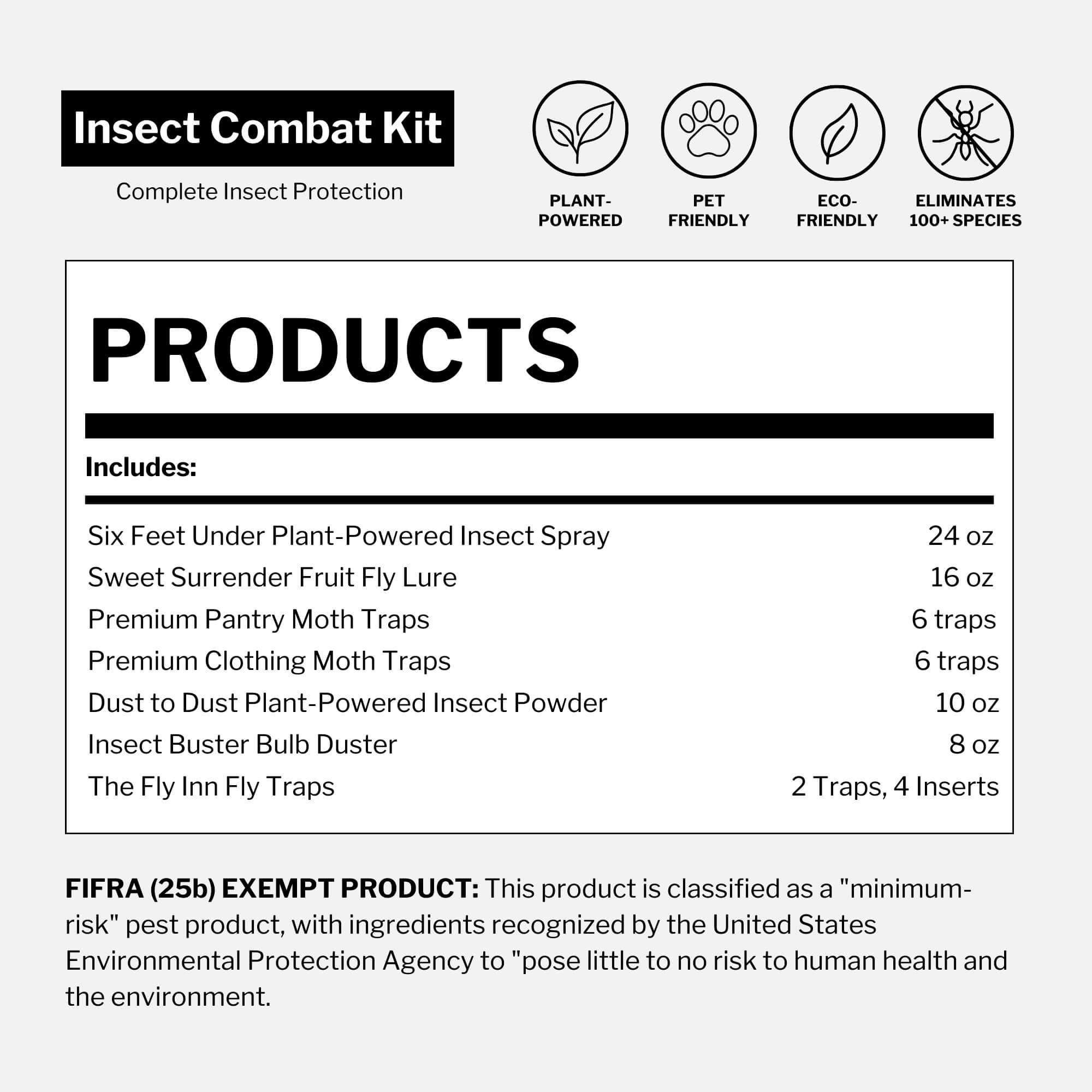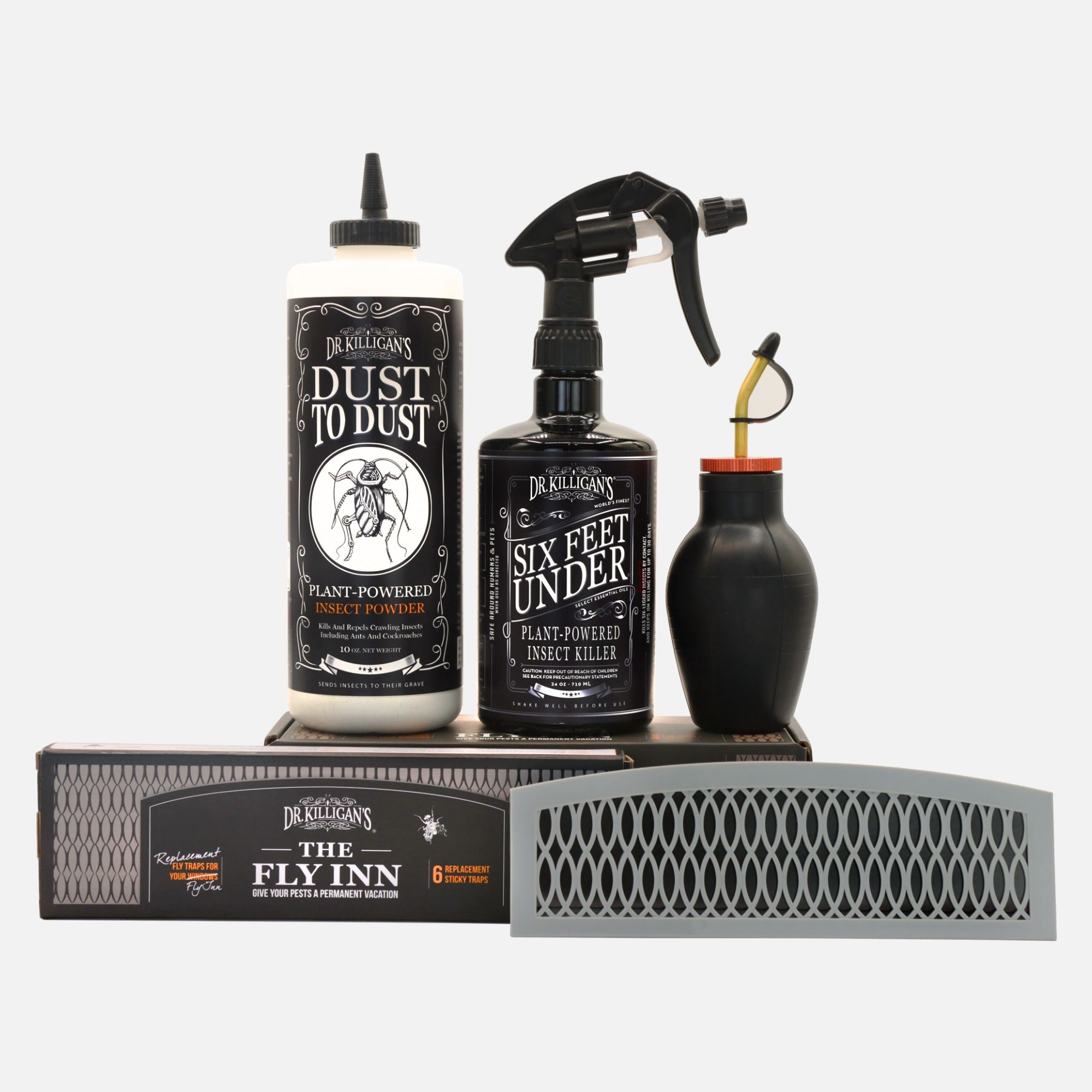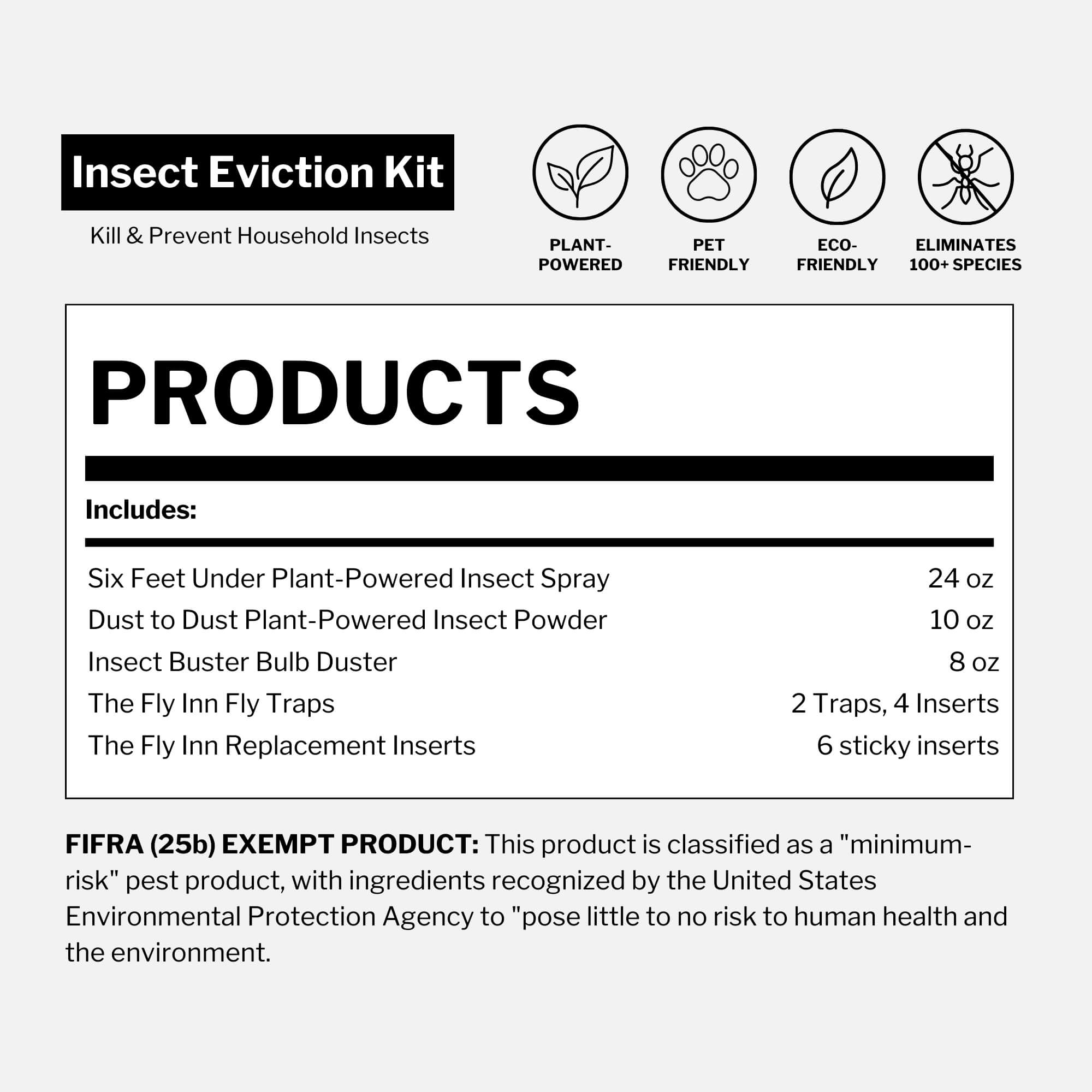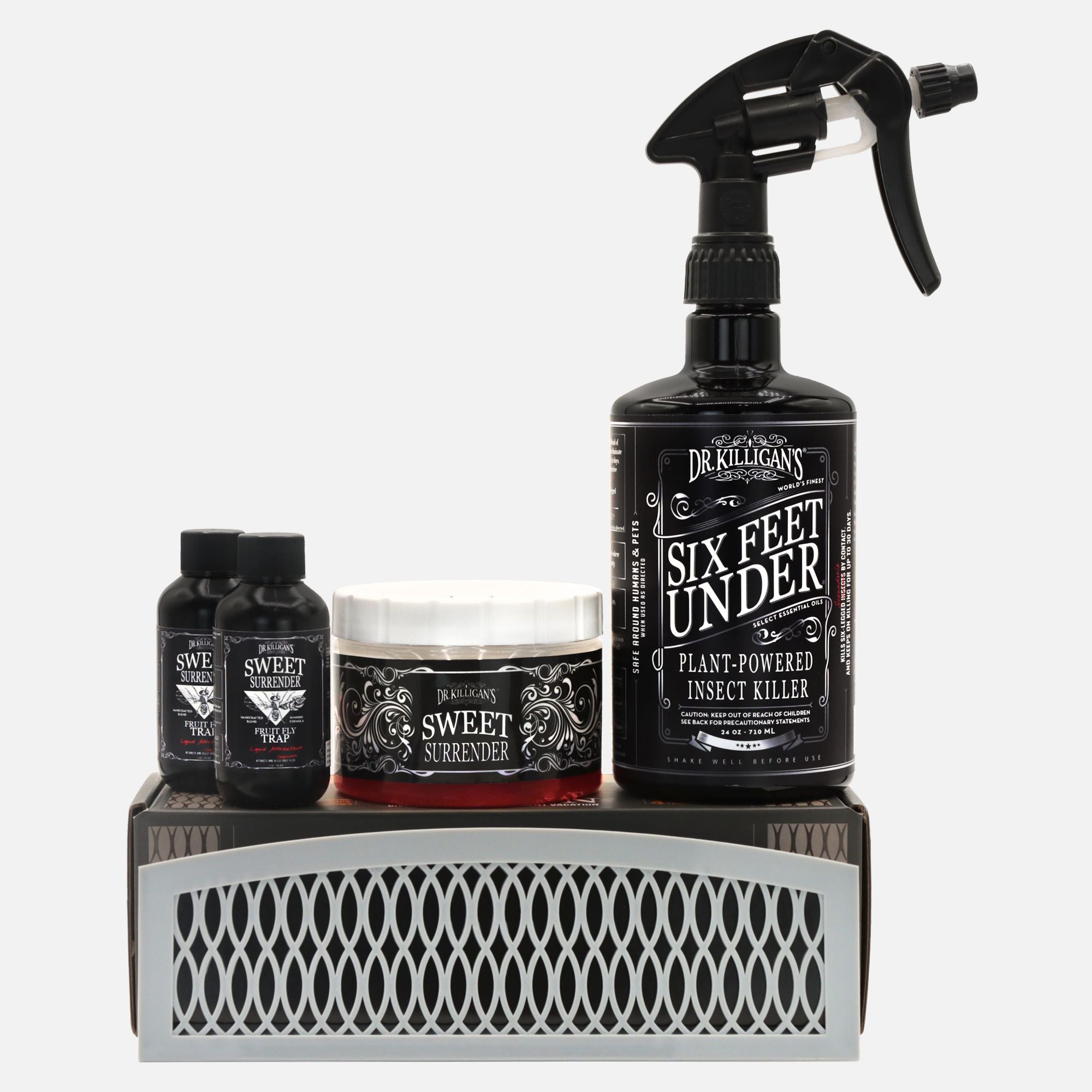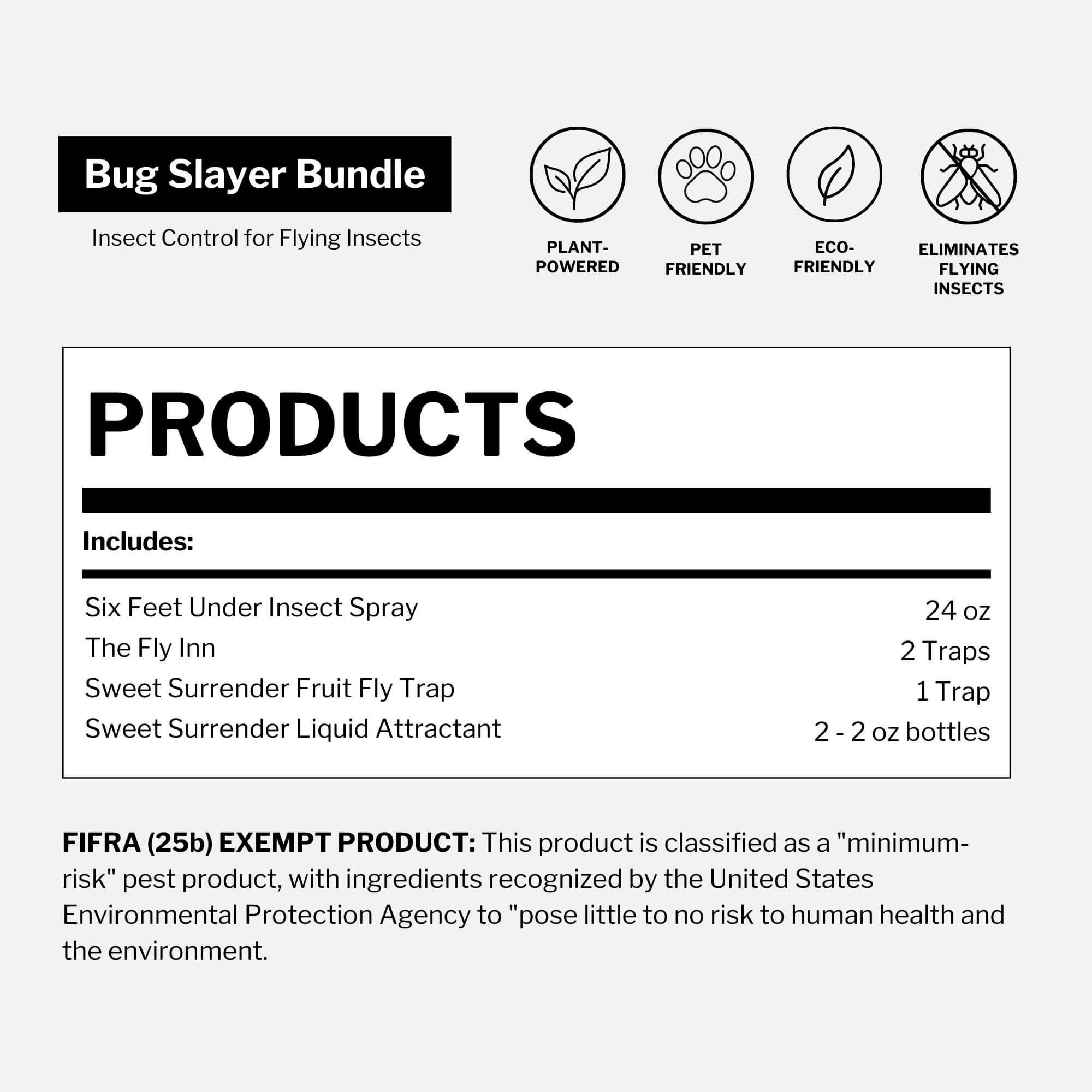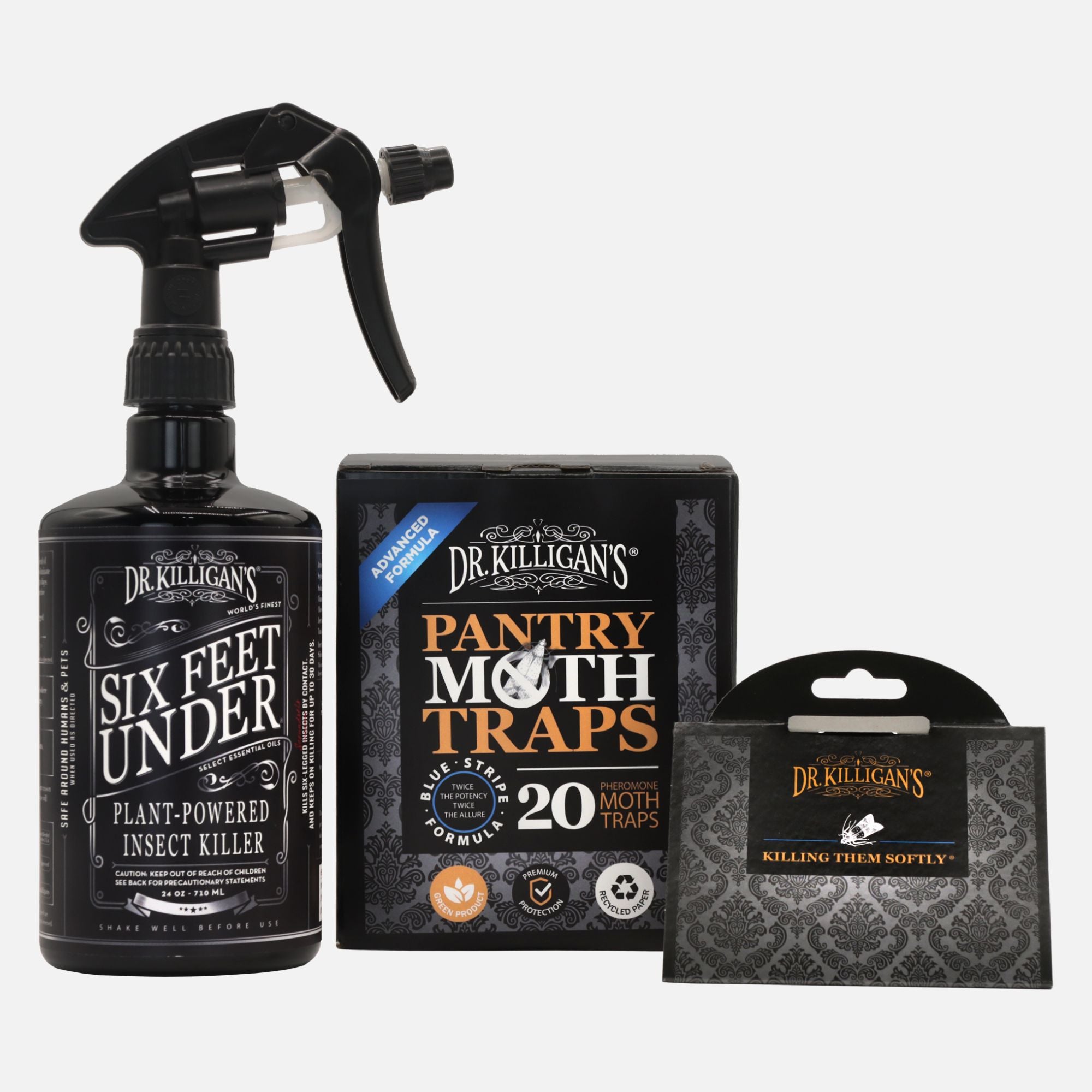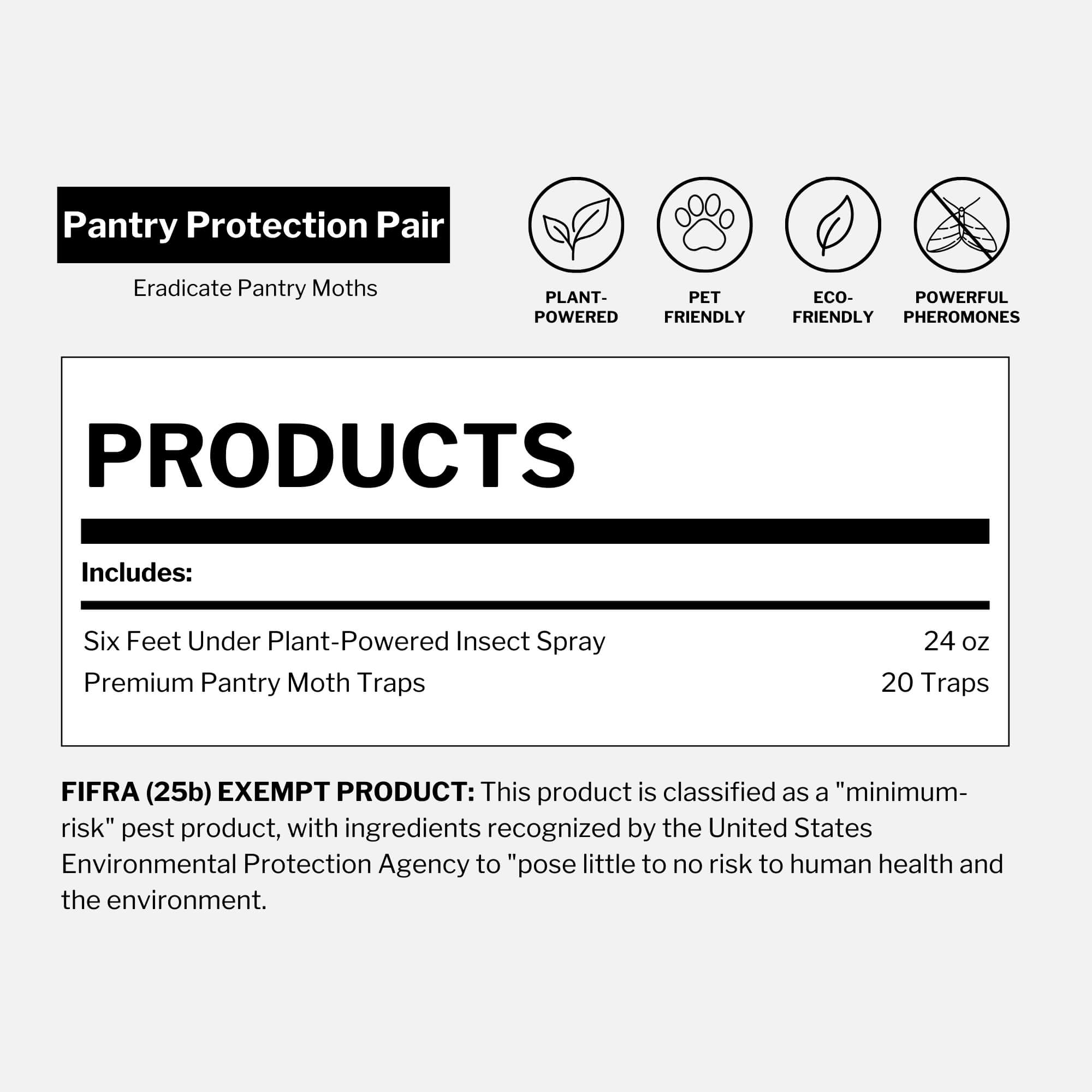Published September 12, 2023 · Updated October 31, 2025
Reviewed by Julie Miller, BA in Language Arts, Editorial Lead, Dr. Killigan’s
TL;DR: Biting midges (no-see-ums) cause itchy red welts and can bite both humans and animals indoors and outdoors. Their bites may lead to allergic reactions or infections. Identify midge bites fast, protect your home with screens and use Dr. Killigan’s Six Feet Under Plant-Powered Insect Spray for safe, effective control.
While their size may fool you, biting midges are a serious nuisance. Though easy to miss, their bites are far more persistent—and often more irritating—than those of other common insects. And unlike other pests, midges can infiltrate indoor spaces, making them especially hard to control.
In this guide, we’ll explore how to identify midge bites, where these pests hide (including in your bedroom) and the most effective ways to eliminate biting midges from your home and yard—naturally and safely.
>>> Eliminate biting midges with the world's most effective eco-insecticide
How to identify midge bites (vs. mosquitoes, fleas and mites)
Biting midges are often mistaken for mosquitoes, fleas or even mites—but their bites have distinct characteristics. Knowing what to look for can help you identify the culprit quickly and treat it appropriately.
What do midge bites look like?
They’re typically small, flat red spots that may appear in clusters on exposed skin—especially the ankles, arms and neck. Unlike mosquito bites, which are raised and puffy, midge bites stay flatter and often become itchier several hours later, rather than right away.
At-a-glance: Midge bites vs. mosquitoes, fleas and mites
| Pest | Bite appearance | Common location | Telltale signs |
|---|---|---|---|
| Midges (no-see-ums) | Small, flat red spots; may appear in clusters. Itch often builds hours later. | Exposed areas — ankles, arms, neck. | Very itchy; may notice tiny flies near windows or lights at night. |
| Mosquitoes | Raised, puffy welts with a clear center. | Any exposed skin after outdoor activity. | Immediate itching; visible swelling. Often single or scattered. |
| Fleas | Small red bumps, often in rows or groups of three. | Ankles, lower legs, around pets’ bedding. | Sharp initial sting; pets scratching; bites below the knee line. |
| Mites | Tiny red bumps or rash-like patches; may form clusters. | Warm, covered areas (waistline, wrists, body folds). | Nighttime itching; may spread; requires deep cleaning or medical care. |
Pro tip: Flea bites tend to stay low—around the ankles and lower legs—and often form neat rows or clusters of three. Midge bites, by contrast, are usually higher on the body and their itching can feel more intense as hours pass.
When to suspect something else
- Bites appear beneath clothing or along seams of mattresses may point to bed bugs
- Burrow-like marks, persistent nighttime itching or spreading rashes may indicate mites—a situation best evaluated by a medical professional
- If redness worsens, swelling spreads or signs of infection appear, seek medical attention

Now that you can spot a midge bite, let’s look at where these elusive “no-see-ums” spend their time indoors.
Can midges live in your bed?
Short answer: no. Biting midges—no-see-ums—don’t nest in mattresses or live on people like bed bugs. They’re tiny (about 1–3 mm) and most active at dusk and dawn. Indoors, they can pass through small gaps or standard screens, bite while you sleep, then rest on walls, window frames, or near lights before leaving.
What actually happens
- How they get in: Drawn to CO₂ and body heat; small enough to bypass many standard screens.
- Where they linger: Windows, lamps, ceilings—not inside bedding.
- What you'll notice: Pin-sized flies near windows at night; flat, red, intensely itchy spots on exposed skin (ankles, arms, neck) that may peak hours later.
If you’re seeing insects in mattress seams or active on bedding during the day, read this next section “Mite bites vs. midges” for a fast comparison.
Mite bites vs. midge bites: A comparative study
It’s easy to confuse mite bites with those of midges—especially when all you’re left with is an itchy red mark. But understanding the differences can help you treat bites more effectively and prevent future infestations.
Mites are often found indoors and tend to live on pets, in furniture or inside bedding and carpets. Their bites may appear as clusters of small red bumps, often accompanied by intense itching—especially at night. Some mites, like scabies, burrow into the skin and require medical treatment.
Biting midges, on the other hand, are mostly outdoor pests that thrive in warm, humid environments near water. Unlike mites, they don’t live on their hosts—they bite, feed and leave. Their bites usually appear as faint, flat marks and may take longer to heal than mite bites, especially if scratched.
Know the difference at a glance:

- Mite bites—Small, red bumps that may appear in clusters, often itch more at night.
- Midge bites—Flat, red patches that often trigger intense itching hours after the bite—and may take longer to heal than other insect bites.
Here's how to respond:
- Mite bites—Disinfect your home and treat pets, bedding or upholstery as needed.
- Midge bites—Use soothing creams, antihistamines and insect repellents. Target the source with midge-eliminating solutions indoors and outdoors.
Knowing whether you’re dealing with mites or biting midges can save time, reduce discomfort and help you choose the right remedy.
Are midge bites dangerous to humans?
Biting midges—or no-see-ums—are more than just annoying. Their bites aren’t just itchy; they can lead to serious skin reactions and, in some cases, pose real health risks.
For many people, no-see-um bites cause intensely itchy welts that may last longer than mosquito or flea bites. Repeated scratching can lead to broken skin, making infections more likely—especially for those with delicate or reactive skin. In more severe cases, bites can also trigger dermatitis, allergic reactions or prolonged inflammation.
But the danger doesn’t end there.

Biting midges are known vectors for disease, capable of transmitting viruses and parasites. While they don’t spread illness as widely as mosquitoes, they have been linked to:
- Oropouche fever and filariasis in certain regions
- Potential allergic reactions to their saliva
Those with weakened immune systems—including the elderly, infants and people with autoimmune conditions—may be particularly vulnerable to complications from midge bites.
Can biting midges harm pets and livestock?

Biting midges don’t just target humans—they also pose a serious threat to pets and livestock.
In animals, no-see-um bites can cause constant scratching, hair loss, skin infections and allergic reactions. Pets like dogs and cats are especially vulnerable if they sleep near open windows, patios or in yards during peak biting hours (dawn and dusk).
For farm animals, the risks go even further.
Biting midges are known carriers of Bluetongue virus, a serious disease that affects cattle, sheep, deer and goats. Infected animals may suffer from:
- Fever
- Swollen tongues and lips
- Lameness
- Decreased milk production
- In severe cases, birth defects in calves and lambs
Unchecked midge infestations can disrupt breeding cycles, reduce productivity and stress your animal population.
Even indoor animals aren't entirely safe. If midges make their way into your home through screens, vents or cracks, they can bite pets while they sleep—just like they bite people.
If your pet is scratching more than usual or waking up with red bumps, biting midges may be the culprit.
Pro tip: Use a plant-based insect spray like Six Feet Under around pet bedding, windows and doors to block midges at their entry points.
How to get rid of biting midges naturally
Eliminating biting midges requires both prevention and control. Start with these safe, natural methods proven to reduce midge populations indoors and outdoors.
Physical barriers:

- Install window screens: Use fine-mesh screens on windows and doors to block midges from entering your home. Because no-see-ums can slip through standard screens, consider upgrading to ultra-fine mesh designed specifically to keep out these pests.
- Seal door gaps: Apply weather stripping and door sweeps to close gaps where midges might sneak in, especially around sliding doors and basement entrances.
Safer treatments:
- Apply Six Feet Under: Use this plant-based formula that kills over 50 insect species, including biting midges. Its blend of soybean, clove and cinnamon oils suffocates insects and disrupts their nervous systems. Apply it to window screens, door frames and other entry points for long-lasting protection that’s safe for your family, pets and the environment when used as directed.
- Use essential oils: Diffuse or spray oils like citronella and tea tree to help deter midges.
- Place deterrent plants: Position lavender and marigold near entrances and windows to discourage insects, including biting midges.
Environmental control:
- Eliminate standing water: Remove or regularly change standing water sources like birdbaths, gutters and pet water bowls to disrupt midge breeding.
- Maintain your yard: Keep your lawn trimmed and gardens tidy to reduce potential breeding habitats and shelter spots for biting midges.
Conclusion: Don't underestimate the power of prevention
Biting midges—or no-see-ums—may be tiny, but their impact is anything but small. From relentless itching to disease transmission, their effects can be both painful and long-lasting.
Here's the good news: With the right knowledge and tools, you can stop midges before they bite. Identify where they’re breeding, fortify your home with proper screens and seals and use eco-friendly and proven treatments like Six Feet Under. This plant-powered formula offers protection without exposing your family or pets to toxins.
Remember: early action is the best defense. Whether you’re dealing with no-see-ums in your bedroom, midge bites after gardening or a growing concern for your pets or livestock, prevention always beats treatment.
Stay protected. Stay bite-free.
And if you’re not sure where to begin, our team is here to help. Reach out to support@drkilligans.com for personalized guidance.




